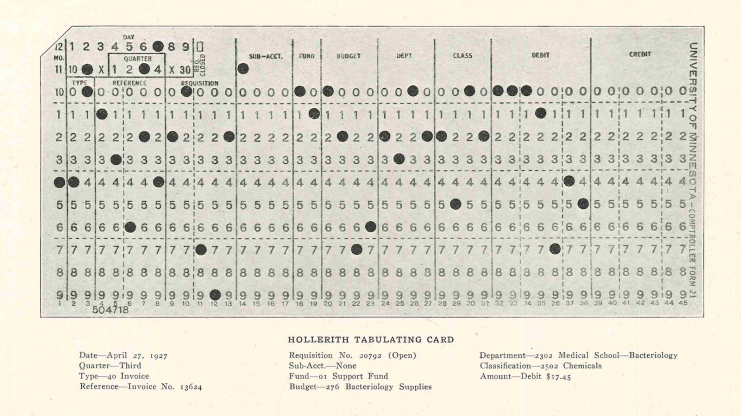
The 1927 Report of the Comptroller featured a detailed outline of the University’s General Accounting System, including a description of how tabulating or punch cards are used.
To monitor budgets, calculate staff and faculty paychecks, track student financial aid, distribute grades, and a variety of other business and academic functions, University enterprise systems use both technology and technologists.
Machines and people have been working together for decades, perhaps more than you had thought, to keep University information technology systems running.
Punch cards such as the one pictured above provided data storage. Holes were punched in the card to represent different pieces of data. Someone would need to punch the holes by hand or with a machine and then use a tabulating machine to compile data from the cards to produce reports, process invoices and checks, manage class registrations, monitor budgets, etc.
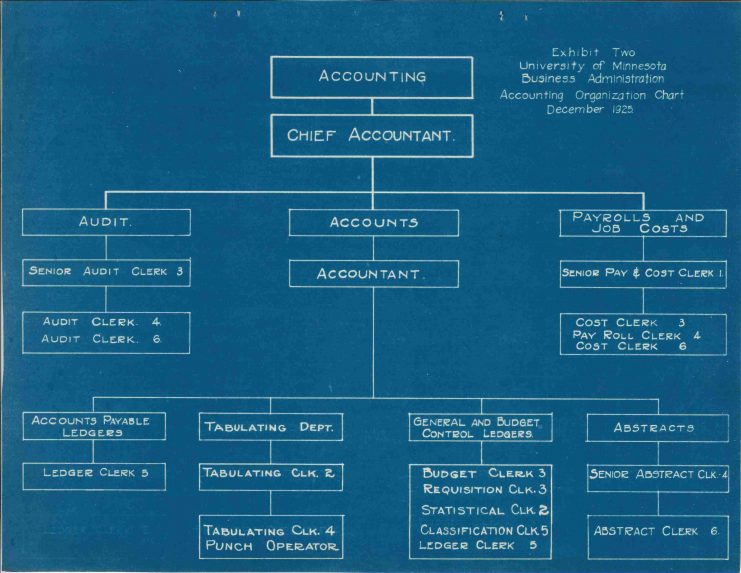
The Accounting Department Organizational Chart for December 1925 includes the Tabulating Department; Office of the President records, collection number 841, box 31.
The people operating punch card and tabulating machines, the majority of whom were women, most likely did not see their role as one of managing information technology.
The 1926-1927 University Address Book lists the first University staff members to have the title “Tabulating Clerk.”
For three decades, Lilien Olesen worked as a tabulating equipment operator and supervisor.
Lilien Olesen’s retirement party was featured in the November 1953 issue of The Minnesotan, a magazine for University staff and faculty. The article notes that she “handled all accounting records, two payrolls of 10,000 checks each month, investments, earnings records, withholding tax forms, distribution of students fees,” all using punch cards.
The work made possible with punch cards in the University Payroll Office was highlighted in the October 1958 issue of The Minnesotan. The article notes that after staff members translate information into “IBM terms, the familiar punched holes… Then machinery takes over. The punched cards pass from the keypunch operators to the apparatus which has the awe-inspiring job of figuring deductions for federal withholding tax (and other deductions)…This electronic age marvel is a junior size ‘brain’ which is capable of making hundreds of arithmetic calculations per minute.”
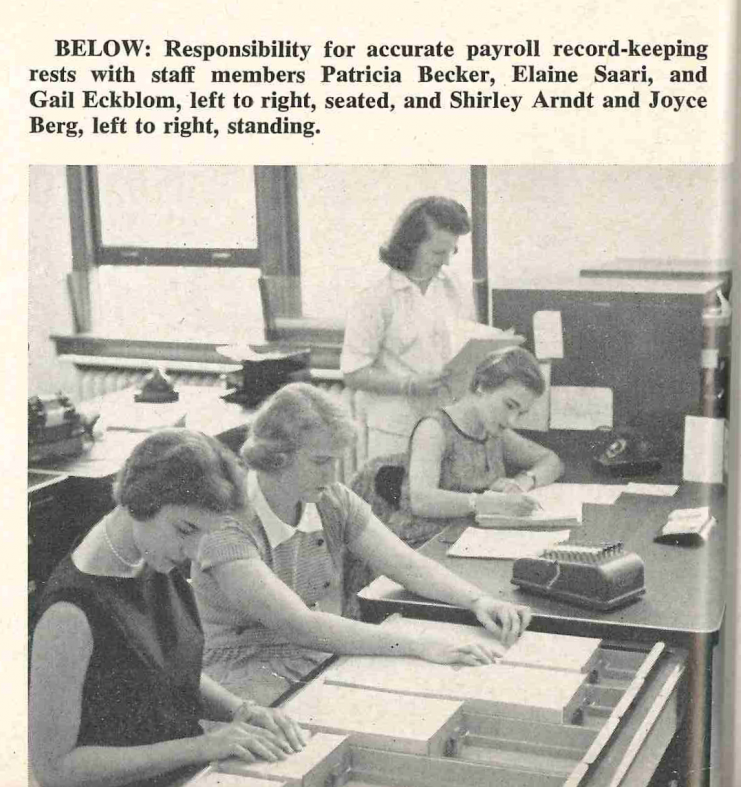
Responsibility for accurate payroll record-keeping rests with staff members Patricia Becker, Elaine Saari, and Gail Eckblom, left to right, seated Shirley Arndt and Joyce Berg, left to right, standing.
The awe-inspiring machinery was not lost on students.
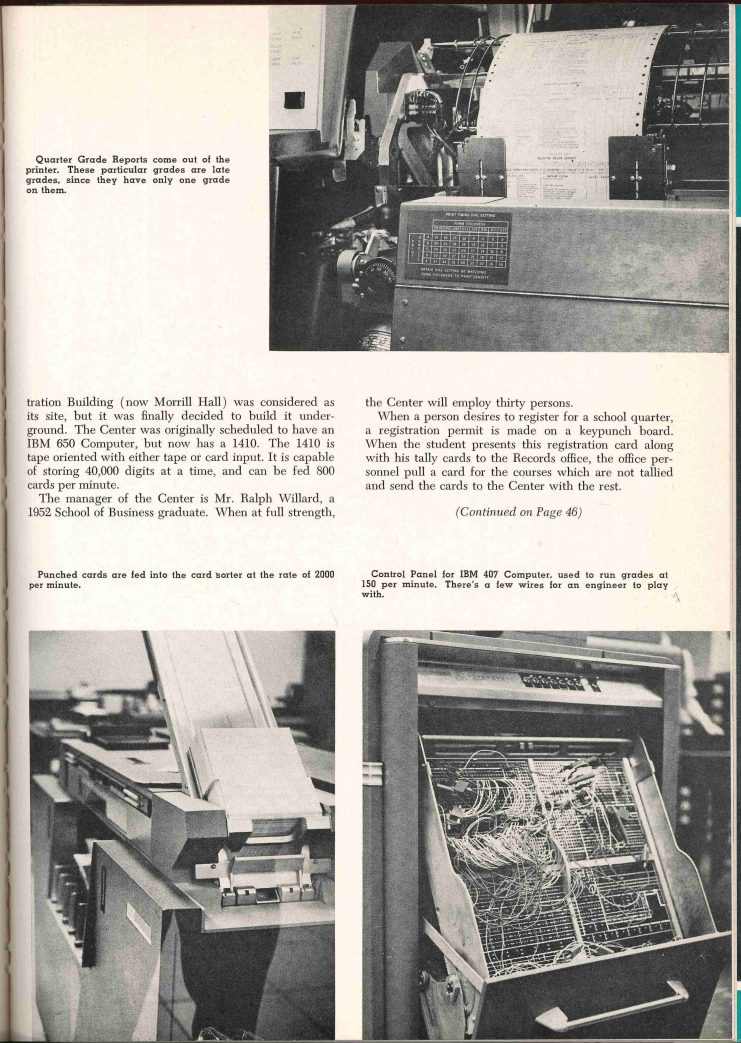
Technolog, an engineering journal published by University students, included an introduction to the University’s new Data Processing Center in its January 1963 issue.
As with device upgrades and software updates today, punch cards were swept away by new, faster technologies. And staff positions that managed data, technology, and information systems became more diverse and dynamic with the use of micro and desktop computers. A possibility that came to fruition through the work of Lilien Olesen and the women who managed the University’s information technology.
To learn more about that history and particularly the role of women in technology at the University at “Powered by WIT: A History of Women in IT@UMN” on Thursday, November 29. The event, hosted by Women in Technology, will feature a panel discussion and facilitated conversation about the historical context of the evolution of women’s roles in the IT landscape, including key historical events, personal reflections, and changes on the horizon. Panel presentation from 2-3:30 p.m. in 101 Walter. Following the panel discussion, a reception in the Upson Room will include a preview of a pop-up exhibit detailing some of the history of women in IT that will be on display in 206 Walter. University Archives is pleased to have co-sponsored the exhibit and provided research guidance in its creation. RSVP to attend.
—Erin George is the University Archives Research Services Archivist. To learn more about the University of Minnesota Archives, please visit www.lib.umn.edu/uarchives.



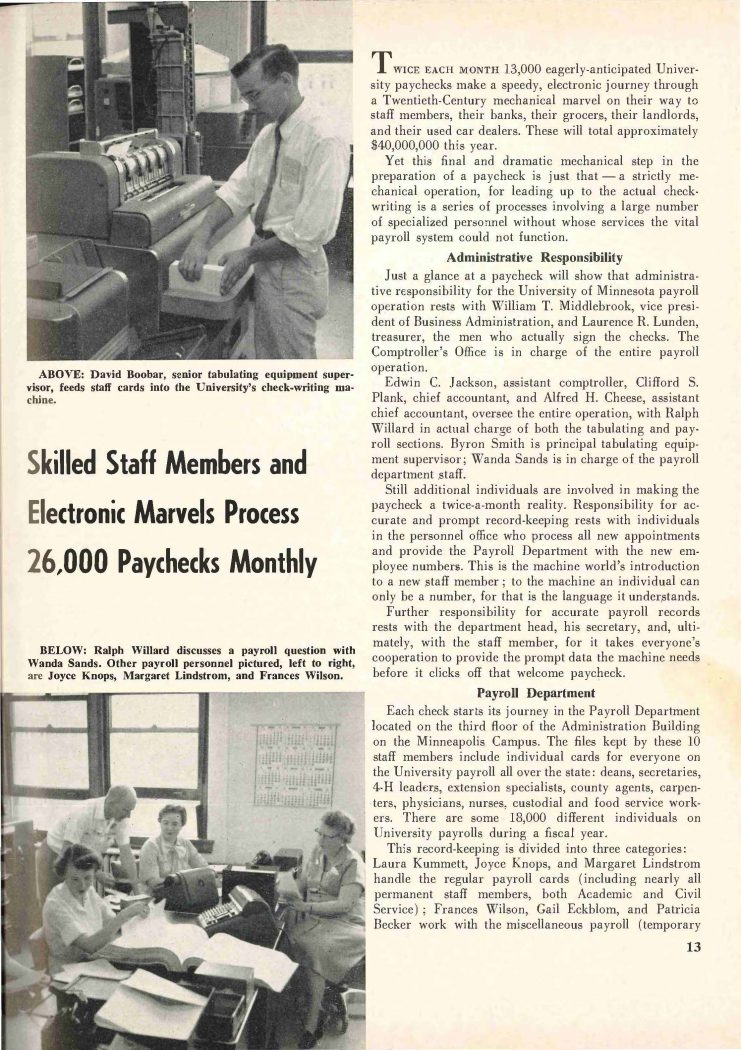
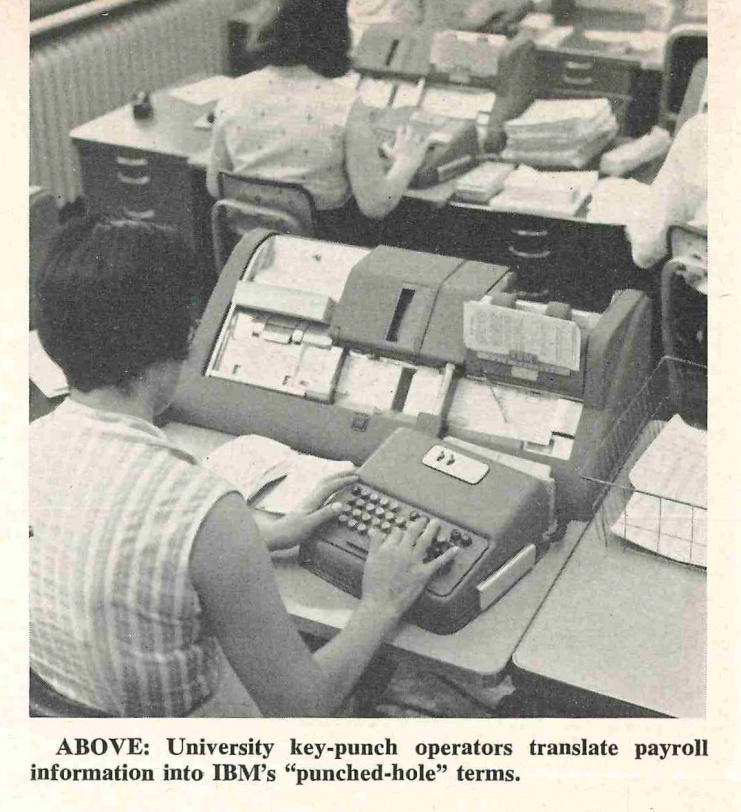



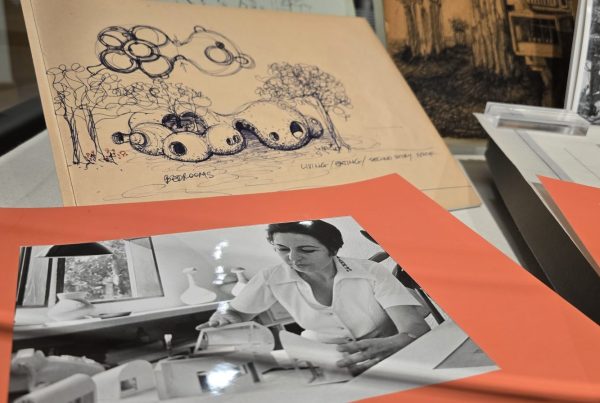

Wow thanks for the memories.
In 1978 while in junior college I worked as a punch card feeder from 6pm until 11pm for $2,85 an hour.
I liked the large stacks because you could grab a smoke while they ran. The little stacks were a pain as we had to feed each batch in separately. In 1979 we got a main frame computer the size of a giant refrigerator and that was fun until they did away with the punchcards and the punchcard operators. Me.